mobile View, to the German Version tap the flag


- parliamentaric monarchy with the British monarch as chief of state
- zone of US-american influence
• Flags
• historical Flags
• Meaning/Origin of the Flag
• Coat of Arms
• Meaning/Origin of the Coat of Arms
• Map
• Numbers and Facts
• History
• Origin of the Country's Name
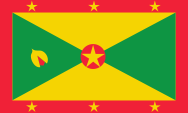
National flag,
ratio = 3:5,
Source, by:
Corel Draw 4





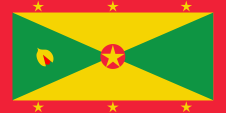
Merchant flag and official flag at sea,
ratio = 1:2,
Source, by: Wikipedia (D)



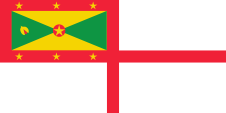
Naval flag,
ratio = 1:2,
Source, by: Wikipedia (D)




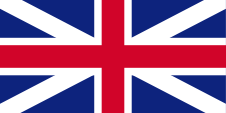
1762–1801,
Flag of United Kingdom,
ratio = 1:2,
Source, by:
Die Welt der Flaggen






Flag of United Kingdom,
ratio = 1:2,
Source, by:
Die Welt der Flaggen





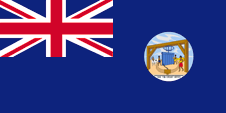
1875–1903,
Flag of the government (state flag),
ratio = 1:2,
Source, by: Flags of the World



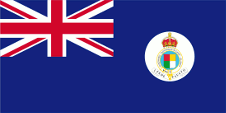
1903–1958, Windward Islands
Flag of the government (state flag),
ratio = 1:2,
Source, by: Flags of the World



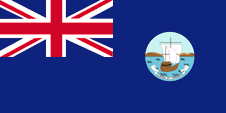
1903–1967,
Flag of the government (state flag),
ratio = 1:2,
Source, by: Flags of the World



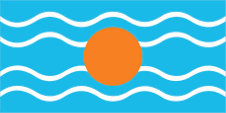
1958–1962,
Flag of the Federation of the West Indies,
ratio = 1:2,
Source, by: Flags of the World



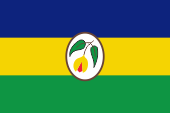
1967–1974,
National flag,
Source, by: Flags of the World




The today's flag of Grenada was introduced on 7th of February in 1974. It shows four triangles in green and yellow surrounded by a red border. In the middle a yellow star on a red disk and further six in the red border. The seven stars are symbolize the seven administrative districts of the island. In the green triangle near the pole is a nutmeg, the most important export of the island. The combination of the colours green, yellow and red in the today's flag are the pan-african colours: Perhaps in 1900 was the beginning of the Panafrica-Movement, wich wants to emphasize the commons of all people with black skin. For the political unity of Africa stands the colour-triad green-yellow-red, wich used many african countries in their flags after the independence. The first country was Ghana in 1957. As the origin apply the colours of Ethiopia (Abessinia), the oldest independent state in Africa. Until 1960 Grenada belonged to the British Windward Islands Colony and became then a self-contained colony. The national flag was in that times a so called "Blue Ensign", a dark blue flag with a flag depiction – the British Union Jack – in the upper left staff quadrant. The Union Jack pointed out to the connections to United Kingdom. United Kingdom introduced a flag system in 1864 in which:
• war ships fly the "White Ensign" (naval flag), a white flag often with an uninterrupted red St. George's-Cross and with the Union Jack in the upper staff quadrant of the flag,
• merchant ships fly a "Red Ensign" (also named "Civil Ensign" → civil flag, the real merchant flag), a red flag with the Union Jack in the upper staff quadrant of the flag, and
• governmental ships fly the "Blue Ensign" (flag for the use by the gouvernment → the actual state flag), a blue flag with the Union Jack in the upper staff quadrant of the flag.
Since 1865 ships of colonial governments were permitted to fly the Blue Ensign with a badge in the flying end of the flag. The respective governments were asked to design appropriate badges. Merchant ships and seafaring persons from colonies were only permitted to use the Red Ensign with a badge, then also named Civil Ensign, if permission has been given to the respective colony by the British admiralty. Such a badge was often a regional landscape representation placed on a disk, often showing ships, historical events or even a kind of a logo. Very often, a badge also showed the name of the country or a motto. Some British possessions, however, already had a coat of arms from the beginning, or their badge was replaced by a coat of arms over the years. To ensure a uniform appearance in the flying end of the flags, coats of arms and other symbols were displayed on a white disk in the size of the earlier badges. There were also exceptions, because some colonies did not use the white disk and placed their escutcheon or even coat of arms directly on the bunting, sometimes enlarged. Already in the '40s they started to remove the white disk and placed the coat of arms directly or enlarged. This conversion process was done gradually, nowhere at the same time and completely. In some British possessions, flags with the white disc are still in use, in others no more and in some areas are both variants in use, next to each other. The flag of the Windward Islands carryed an other badge. It showed a fourfold divided shield with the colours red, yellow, green and white, surrounded by a white belt with the inscription "Governor in Chief, Windward Islands", above the British crown. Below a white banner with the motto of the islands: "i pede fausto" → "go with blessed foot". The separate colonies of the Windward Islands had however mostly used their own "Blue Ensigns" with an own badge. The flag of the Windward Islands was was also used only by the government of the colony. Grenada used the official blue British flag, the Blue Ensign, with a Badge in the flying end of the flag between 1875 and 1903. The Badge showed on a disk a by an ox-capstan driven sugar-mill and some farmhands. Below the then motto of the island: "Hae tibi erunt artes" → "This arts will be yours". The badge showed a in direction of the coast sailing ship between 1903 and 1967. Below – on a banner – the then motto of the island: "Clarior e tanebris". United Kingdom granted interior self administration on 27th of February in 1967, and Grenada became an autonomous with United Kingdom associated state. On the occasion of that fact was a flag which finished the tradition of the "Blue Ensigns". It was horizontally striped in blue-yellow-green with a nutmeg on a large oval in the middle. That flag was adoped on 19th of january in 1967. Those three colours were even in use by other members of the Westindian Federation, but in other combinations. Supposedly there is also a naval flag. Its actual existence is unsafe. The flag is oriented on the British Ensign system again and shows a continuous white Georgian cross on a white bunting and the nation flag in the upper corner. The colors are defined as follows: red = Pantone 032, yellow = Pantone 109, green = Pantone 355.
Source:
Die Welt der Flaggen,
Wikipedia (D), Flags of the World

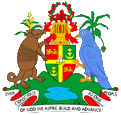
Coat of arms of Grenada,
Source, by:
Corel Draw 4

The coat of arms of the state was like the flag introduced on 7th of February
in 1974. The blazon is squared by a yellow cross. From them are two red coloured
with a golden leopard (→ England), and the other both are green with a white Mary-lily on a golden crescent. On the shield a golden helmet, a red-white torus as soon as red roses. Shield-holders are an armadillo on the right and a blue pigeon to the left. The pedestal of the coat of arms is green with a pond, a banana-palm-tree, a corn-plant and yellow blossoms.
Source: Flaggen Wappen Hymnen,
Wikipedia (D)

Location:
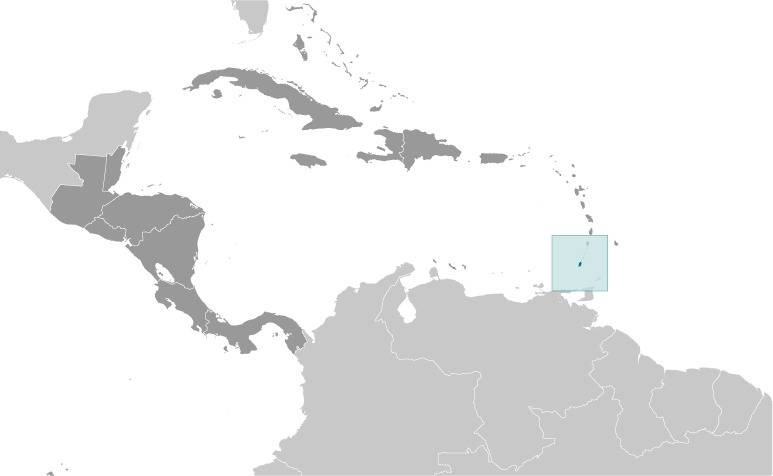
Source: CIA World Factbook
Map of the country:
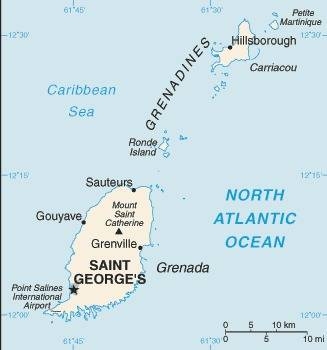
Source: CIA World Factbook

Area: 133 square miles
Inhabitants: 112.000 (2019), thereof 82% of African descent, 13% Mulattos, 2% Indians, 1% Europeans
Religions: 49% Protestant, 36% Roman Catholic, 5% Non-Religious
Density of Population: 843 inh./sq.mi.
Capital: St. George's, 7.000 inh.
official Language: English
other Languages: Creole English, Creole French
Currency: East Caribbean Dollar (EC$; XCD) = 100 Cents
Time Zone: GMT – 4 h
Source:
Wikipedia (D),
CIA World Factbook

1498 · discovered
1650 · France purchases Grenada from private ownership
1762 · British capture
1779–1783 · French occupation
1833 · end of the slavery
1834–1960 · part of the British Colony of the Windward Islands
1958–1962 · part of the British Colony of the "Federation of the West Indies"
1967 · granting of internal self government
1974 · United Kingdom grants independence
1979 · Maurice Bishop becomes prime minister and extends the dealings to Cuba
1983 · coup d'état, murder of Maurice Bishop, military intervention of the USA under help of Caribbean auxiliary troops, enduring occupation of the island
1984 · elections
Source:
Atlas zur Geschichte,
Wikipedia (D),
Discovery '97

When Columbus discovered the island in 1498, he named the island "Concepción". At some point in time the name "Grenada" came into use, but the origin of the name is unknown. It is believed that the island got its name from Spanish sailors of the 16th century to recall the city of Granada.
Source:
Wikipedia (D)


![]()


































